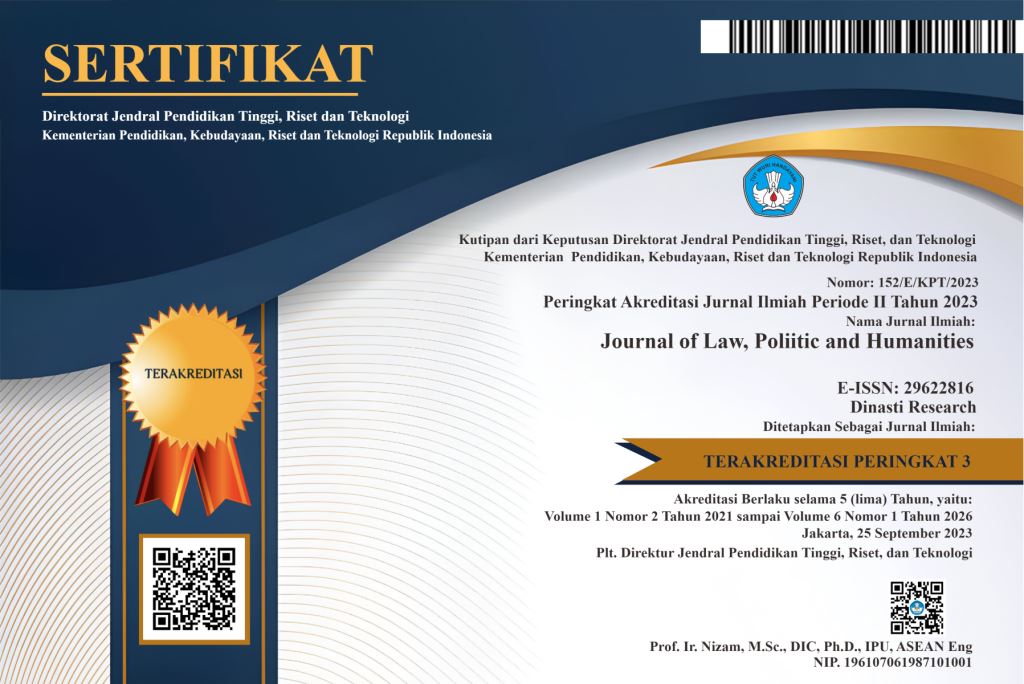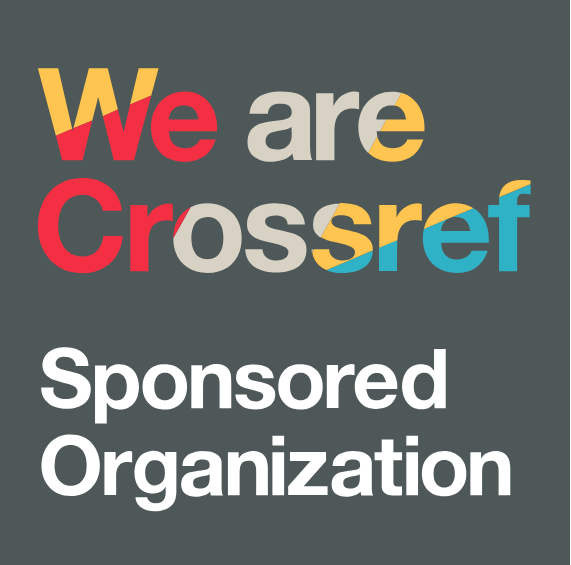Achieving Zero Poverty Goal in Bojonegoro Through the Welfare Sheep Program: Public Value Perspective
DOI:
https://doi.org/10.38035/jlph.v5i3.1326Keywords:
Zero Poverty, Welfare Sheep Program, Public ValueAbstract
The main objectives of this study are to evaluate the public value of the Welfare Sheep Program in achieving zero poverty in Bojonegoro Regency. This program is one of the efforts made by the Government to improve the welfare of the poor as a form of responsibility and concern from the Government to reduce poverty rates. This study adopts a qualitative method with a case study approach. This type of research is qualitative descriptive. Data collection was carried out through observation, interview, and documentation techniques. The researcher applies Mark Moore's theory of public value, namely Legitimacy and Support, Operational Capability, and Substantial Value. The findings of the study show that the Welfare Sheep program has succeeded in increasing the income of beneficiary families in the form of increasing the number of sheep. However, the availability of quality feed is still the main obstacle to the program's sustainability because of sheep deaths. This happens because no technology can increase livestock productivity through feed. By using modern technology, the feed management process becomes faster, more effective, efficient, and can help meet the nutritional needs of sheep in real-time and allows farmers to produce more nutritious feed that is in accordance with the nutritional needs of sheep.
References
Anas, F., Zulkhah, S., & Sholikin, A. (2024). Implementasi Kebijakan Penanggulangan Kemiskinan di Kabupaten Lamongan. Madani Jurnal Politik Dan Sosial Kemasyarakatan, 16(2), 249–259.
Benington, J. (2009). International Journal of Public Creating the Public In Order To Create Public Value?? International Journal of Public Administration, October 2014, 37–41. https://doi.org/10.1080/01900690902749578
BPS. (2024). Persentase Penduduk Miskin Maret 2024 turun menjadi 9,03 persen. https://www.bps.go.id/id/pressrelease/2024/07/01/2370/persentase-penduduk-miskin-maret-2024-turun-menjadi-9-03-persen-.html
BPS Kabupaten Bojonegoro. (2024). Berita Resmi Satistik. BPS Kabupaten Bojonegoro.
Cheng, X. yu, Wang, J. ying, & Chen, K. Z. (2021). Elite capture, the “follow-up checks” policy, and the targeted poverty alleviation program: Evidence from rural western China. Journal of Integrative Agriculture, 20(4), 880–890. https://doi.org/10.1016/S2095-3119(20)63444-X
Creswell, J. W. (2015). Penelitian Kualitatif & Desain Riset. In Mycological Research. Pustaka Pelajar.
Cutillo, A., Raitano, M., & Siciliani, I. (2020). Income ? Based and Consumption ? Based Measurement of Absolute Poverty?: Insights from Italy. Social Indicators Research, 0123456789. https://doi.org/10.1007/s11205-020-02386-9
Djafar, R., & Sune, U. (2019). Pengentasan Kemiskinan Berbasis Pemberdayaan Masyarakat di Kabupaten Pohuwato. Madani Jurnal Politik Dan Sosial Kemasyarakatan, 11(3), 246–270. https://doi.org/10.52166/madani.v11i3.1720
Edo Ramadhana, Y. (2024). Satu Semester, Serapan APBD Bojonegoro 2024 Baru 21 Persen, DPRD Desak Evaluasi Rutin Kinerja OPD. Radar Bojonegoro. https://radarbojonegoro.jawapos.com/bojonegoro/714851537/satu-semester-serapan-apbd-bojonegoro-2024-baru-21-persen-dprd-desak-evaluasi-rutin-kinerja-opd
Febrianti, E., & Sutrisno. (2023). Poverty Reduction In Bojonegoro Regency Based On Regional Autonomy Implementation. Mamangan: Jurnal Ilmu Sosial, 12(1), 32–42.
Jetlikhsan, D., & Boedirochminarni, A. (2024). Sustainable Development Goals: Analysis Factors No Poverty in Java. Jurnal Ilmiah Bisnis Dan Ekonomi Asia, 18(1), 127–137. https://doi.org/10.32815/jibeka.v18i1.1986
Lavell, A., McFarlane, C., Moore, H. L., Woodcroft, S., & Yap, C. (2023). Pathways to Urban Equality through the Sustainable Development Goals: Modes of Extreme Poverty, Resilience, and Prosperity. International Journal of Urban Sustainable Development, 15(1), 215–229. https://doi.org/10.1080/19463138.2023.2226099
Leal Filho, W., Lovren, V. O., Will, M., Salvia, A. L., & Frankenberger, F. (2021). Poverty: A central barrier to the implementation of the UN Sustainable Development Goals. Environmental Science and Policy, 125(September), 96–104. https://doi.org/10.1016/j.envsci.2021.08.020
Maria, W. N., Kirana, N. N., Ulpa, A., & Handayani, D. N. (2023). Implementasi Program Pemberdayaan Masyarakat Untuk Menurunkan Angka Kemiskinan Di Kota Pontianak. J-3P (Jurnal Pembangunan Pemberdayaan Pemerintahan), 8(November), 210–224. https://doi.org/10.33701/j-3p.v8i2.3805
Moore, M. H. (1995). Creating Public Value: Strategic Management in Government.
Mulyadi, M. (2018). Strategi Pemerintah dalam Penanganan Kemiskinan dan Kesenjangan. Bidang Kesejahteraan Sosial Info Singkat, 10(9).
Nur Afifah, M., Hanani, R., & Sunu Astuti, R. (2024). Public Value Dalam Penggunaan E-Retribusi di Pasar Tradisional Bangetayu Kota Semarang. In Journal of Public Policy and Management Review (Vol. 13, Issue 3). Universitas Diponegoro.
Pemkab Bojonegoro. (2023). Pemkab Bojonegoro Terus Berupaya Secara Intensif Menurunkan Kemiskinan Ekstrem. Bojonegorokab.Go.Id. https://bojonegorokab.go.id/berita/7255/pemkab-bojonegoro-terus-berupaya-secara-intensif-menurunkan-kemiskinan-ekstrem
Purwanto, E. (2024). Mapping the Landscape of ‘ No Poverty ’ Research?: A Bibliometric Study of Trends and Emerging Themes. 4(2), 277–294.
Rizky Kurniyanto, I., Arifiyanti, N., & Prastika Destirani, R. (2023). Strategi pengentasan kemiskinan berbasis kearifan lokal pada masyarakat desa keleyan. Agriscience, 3(3), 699–709. https://doi.org/10.21107/agriscience.v3i3.19448
Rogahang, A. L., Tulusan, F. M. G., & Palar, N. R. A. (2023). Implementasi Kebijakan Pengentasan Kemiskinan di Desa Molompar Kecamatan Tombatu Timur Kabupaten Minahasa Tenggara. Jurnal Administrasi Publik, 9(4), 403–419. https://doi.org/10.35797/jap.v9i3.49555
Ruhana, F., Nasution, M. S., Susniwan, Ardieansyah, & Sutiapermana, A. (2024). Combating Poverty and Social Inequality in 2023 a Global Imperative for Equitable Development and Social Justice. International Journal of Science and Society, 6(1), 899–912. https://doi.org/10.54783/ijsoc.v6i1.1081
Sabri, Kuliman, Febrianti, E., & Asnah. (2024). Implikasi Globalisasi Dan Kemiskinan di Indonesia. Journal of Internasional Multidisciplinary Research, 2(1), 145–154.
Sari, N. D., Rahayu, N. D., Saniatu Salimah, B., Muhammad Hima Firmansah, N., & Khoiriawati, N. (2024). Strategi Kebijakan Publik Melalui Program Pengentasan Kemiskinan di Era Pemerintahan Jokowi. Jurnal Ekonomi, Bisnis Dan Manajemen, 2(3), 14–25. https://doi.org/10.58192/ebismen.v3i2.2112
Sunday Oni, A. (2021). Achieving Humanism and Zero Poverty In Sustainable Development Goals: A Philosophical Reflection. International Journal of Integrative Humanism, 13(2), 6.
Syofya, H. (2018). Pengaruh Tingkat Kemiskinan Dan Pertumbuhan Ekonomi Terhadap Indeks Pembangunan Manusia Indonesia. Jurnal Ilmiah Ekonomi Dan Bisnis, 15(2), 177–185. https://doi.org/10.31849/jieb.v15i2.1153
Taqiyah, B., Rupiarsieh, & Kumalasari, A. (2024). Collaborative Governance Dalam Pengentasan Kemiskinan Ekstrem di Kabupaten Bojonegoro. JIAN-Jurnal Ilmiah Administrasi Negara, 8(1), 133–145. https://doi.org/10.56071/jian.v8i1.840
Wibowo, A. (2023). Global Economic Challenges for Indonesia?: Equitable Development for Sustainable Prosperity. Stabek 7: Seminar Teknologi, Akuntansi, Bisnis, Ekonomi, Dan Komunitas, 3, 23–40. https://doi.org/10.35912/stabek.v3i.175
Yopiannor, F. Z., & Milka. (2022). Public Value of “Anak Itah” Program Innovation in Palangka Raya City. Publisia: Jurnal Ilmu Administrasi Publik, 7(2), 99–114. https://doi.org/10.26905/pjiap.v7i2.5273
Yu, Y., & Huang, J. (2021). Poverty Reduction of Sustainable Development Goals in the 21st Century: A Bibliometric Analysis. Frontiers in Communication, 6(October), 1–15. https://doi.org/10.3389/fcomm.2021.754181
Anas, F., Zulkhah, S., & Sholikin, A. (2024). Implementasi Kebijakan Penanggulangan Kemiskinan di Kabupaten Lamongan. Madani Jurnal Politik Dan Sosial Kemasyarakatan, 16(2), 249–259.
Benington, J. (2009). International Journal of Public Creating the Public In Order To Create Public Value?? International Journal of Public Administration, October 2014, 37–41. https://doi.org/10.1080/01900690902749578
BPS. (2024). Persentase Penduduk Miskin Maret 2024 turun menjadi 9,03 persen. https://www.bps.go.id/id/pressrelease/2024/07/01/2370/persentase-penduduk-miskin-maret-2024-turun-menjadi-9-03-persen-.html
BPS Kabupaten Bojonegoro. (2024). Berita Resmi Satistik. BPS Kabupaten Bojonegoro.
Cheng, X. yu, Wang, J. ying, & Chen, K. Z. (2021). Elite capture, the “follow-up checks” policy, and the targeted poverty alleviation program: Evidence from rural western China. Journal of Integrative Agriculture, 20(4), 880–890. https://doi.org/10.1016/S2095-3119(20)63444-X
Creswell, J. W. (2015). Penelitian Kualitatif & Desain Riset. In Mycological Research. Pustaka Pelajar.
Cutillo, A., Raitano, M., & Siciliani, I. (2020). Income ? Based and Consumption ? Based Measurement of Absolute Poverty?: Insights from Italy. Social Indicators Research, 0123456789. https://doi.org/10.1007/s11205-020-02386-9
Djafar, R., & Sune, U. (2019). Pengentasan Kemiskinan Berbasis Pemberdayaan Masyarakat di Kabupaten Pohuwato. Madani Jurnal Politik Dan Sosial Kemasyarakatan, 11(3), 246–270. https://doi.org/10.52166/madani.v11i3.1720
Edo Ramadhana, Y. (2024). Satu Semester, Serapan APBD Bojonegoro 2024 Baru 21 Persen, DPRD Desak Evaluasi Rutin Kinerja OPD. Radar Bojonegoro. https://radarbojonegoro.jawapos.com/bojonegoro/714851537/satu-semester-serapan-apbd-bojonegoro-2024-baru-21-persen-dprd-desak-evaluasi-rutin-kinerja-opd
Febrianti, E., & Sutrisno. (2023). Poverty Reduction In Bojonegoro Regency Based On Regional Autonomy Implementation. Mamangan: Jurnal Ilmu Sosial, 12(1), 32–42.
Jetlikhsan, D., & Boedirochminarni, A. (2024). Sustainable Development Goals: Analysis Factors No Poverty in Java. Jurnal Ilmiah Bisnis Dan Ekonomi Asia, 18(1), 127–137. https://doi.org/10.32815/jibeka.v18i1.1986
Lavell, A., McFarlane, C., Moore, H. L., Woodcroft, S., & Yap, C. (2023). Pathways to Urban Equality through the Sustainable Development Goals: Modes of Extreme Poverty, Resilience, and Prosperity. International Journal of Urban Sustainable Development, 15(1), 215–229. https://doi.org/10.1080/19463138.2023.2226099
Leal Filho, W., Lovren, V. O., Will, M., Salvia, A. L., & Frankenberger, F. (2021). Poverty: A central barrier to the implementation of the UN Sustainable Development Goals. Environmental Science and Policy, 125(September), 96–104. https://doi.org/10.1016/j.envsci.2021.08.020
Maria, W. N., Kirana, N. N., Ulpa, A., & Handayani, D. N. (2023). Implementasi Program Pemberdayaan Masyarakat Untuk Menurunkan Angka Kemiskinan Di Kota Pontianak. J-3P (Jurnal Pembangunan Pemberdayaan Pemerintahan), 8(November), 210–224. https://doi.org/10.33701/j-3p.v8i2.3805
Moore, M. H. (1995). Creating Public Value: Strategic Management in Government.
Mulyadi, M. (2018). Strategi Pemerintah dalam Penanganan Kemiskinan dan Kesenjangan. Bidang Kesejahteraan Sosial Info Singkat, 10(9).
Nur Afifah, M., Hanani, R., & Sunu Astuti, R. (2024). Public Value Dalam Penggunaan E-Retribusi di Pasar Tradisional Bangetayu Kota Semarang. In Journal of Public Policy and Management Review (Vol. 13, Issue 3). Universitas Diponegoro.
Pemkab Bojonegoro. (2023). Pemkab Bojonegoro Terus Berupaya Secara Intensif Menurunkan Kemiskinan Ekstrem. Bojonegorokab.Go.Id. https://bojonegorokab.go.id/berita/7255/pemkab-bojonegoro-terus-berupaya-secara-intensif-menurunkan-kemiskinan-ekstrem
Purwanto, E. (2024). Mapping the Landscape of ‘ No Poverty ’ Research?: A Bibliometric Study of Trends and Emerging Themes. 4(2), 277–294.
Rizky Kurniyanto, I., Arifiyanti, N., & Prastika Destirani, R. (2023). Strategi pengentasan kemiskinan berbasis kearifan lokal pada masyarakat desa keleyan. Agriscience, 3(3), 699–709. https://doi.org/10.21107/agriscience.v3i3.19448
Rogahang, A. L., Tulusan, F. M. G., & Palar, N. R. A. (2023). Implementasi Kebijakan Pengentasan Kemiskinan di Desa Molompar Kecamatan Tombatu Timur Kabupaten Minahasa Tenggara. Jurnal Administrasi Publik, 9(4), 403–419. https://doi.org/10.35797/jap.v9i3.49555
Ruhana, F., Nasution, M. S., Susniwan, Ardieansyah, & Sutiapermana, A. (2024). Combating Poverty and Social Inequality in 2023 a Global Imperative for Equitable Development and Social Justice. International Journal of Science and Society, 6(1), 899–912. https://doi.org/10.54783/ijsoc.v6i1.1081
Sabri, Kuliman, Febrianti, E., & Asnah. (2024). Implikasi Globalisasi Dan Kemiskinan di Indonesia. Journal of Internasional Multidisciplinary Research, 2(1), 145–154.
Sari, N. D., Rahayu, N. D., Saniatu Salimah, B., Muhammad Hima Firmansah, N., & Khoiriawati, N. (2024). Strategi Kebijakan Publik Melalui Program Pengentasan Kemiskinan di Era Pemerintahan Jokowi. Jurnal Ekonomi, Bisnis Dan Manajemen, 2(3), 14–25. https://doi.org/10.58192/ebismen.v3i2.2112
Sunday Oni, A. (2021). Achieving Humanism and Zero Poverty In Sustainable Development Goals: A Philosophical Reflection. International Journal of Integrative Humanism, 13(2), 6.
Syofya, H. (2018). Pengaruh Tingkat Kemiskinan Dan Pertumbuhan Ekonomi Terhadap Indeks Pembangunan Manusia Indonesia. Jurnal Ilmiah Ekonomi Dan Bisnis, 15(2), 177–185. https://doi.org/10.31849/jieb.v15i2.1153
Taqiyah, B., Rupiarsieh, & Kumalasari, A. (2024). Collaborative Governance Dalam Pengentasan Kemiskinan Ekstrem di Kabupaten Bojonegoro. JIAN-Jurnal Ilmiah Administrasi Negara, 8(1), 133–145. https://doi.org/10.56071/jian.v8i1.840
Wibowo, A. (2023). Global Economic Challenges for Indonesia?: Equitable Development for Sustainable Prosperity. Stabek 7: Seminar Teknologi, Akuntansi, Bisnis, Ekonomi, Dan Komunitas, 3, 23–40. https://doi.org/10.35912/stabek.v3i.175
Yopiannor, F. Z., & Milka. (2022). Public Value of “Anak Itah” Program Innovation in Palangka Raya City. Publisia: Jurnal Ilmu Administrasi Publik, 7(2), 99–114. https://doi.org/10.26905/pjiap.v7i2.5273
Yu, Y., & Huang, J. (2021). Poverty Reduction of Sustainable Development Goals in the 21st Century: A Bibliometric Analysis. Frontiers in Communication, 6(October), 1–15. https://doi.org/10.3389/fcomm.2021.754181
Downloads
Published
How to Cite
Issue
Section
License
Copyright (c) 2025 Alfiatur Rohmah, Ana Kumalasari, Ida Swasanti, Ousman Corr

This work is licensed under a Creative Commons Attribution 4.0 International License.
Authors who publish their manuscripts in this journal agree to the following conditions:
- The copyright on each article belongs to the author(s).
- The author acknowledges that the Journal of Law, Poliitic and Humanities (JLPH) has the right to be the first to publish with a Creative Commons Attribution 4.0 International license (Attribution 4.0 International (CC BY 4.0).
- Authors can submit articles separately, arrange for the non-exclusive distribution of manuscripts that have been published in this journal into other versions (e.g., sent to the author's institutional repository, publication into books, etc.), by acknowledging that the manuscript has been published for the first time in the Journal of Law, Poliitic and Humanities (JLPH).


























